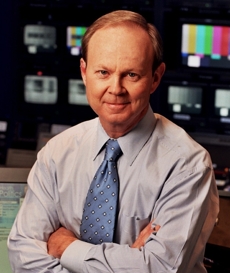
By MIKE MAGEE
What are the chances that citizens of New York, the largest city in the nation, would vote in a majority to oppose a formerly corrupt politician with a party machine behind him, and instead favor a little known candidate – the son of immigrant parents with “swarthy skin and belligerent independence,” from a suspect minority and religious heritage, who actively mixed music and politics, who seemed to come out of nowhere but be everywhere at once, and was ultra focused on “efficiency and honesty in municipal government?”
And what if that had occurred not once, but twice in the last century?
Certainly by now, the name Zohran Mamdani is already ringing in your ears. More on him in a moment. But let’s first travel back a century to introduce another candidate for mayor whose life and career presaged the modern day version.
His name was Fiorello La Guardia, and his remains were laid to rest on September 21, 1947 in Woodland Cemetery, a short distance from his home at 5020 Woodbridge Avenue in the Riverdale section of the Bronx. He died at age 64 from pancreatic cancer.
“The Little Flower” (a nickname that derived from his first name Fiore – Italian for flower) described his stature (5 foot 2 inches) but not necessarily his personality. The New York Times obituary described him “as much a part (of New York) as any of its public buildings” and “a little firebrand.”
By any measure, he was one of New York’s own, earning the morning of his death in 1947 the Fire Department’s 5-5-5-5 signal, a traditional bell code used to honor firefighters who have died in the line of duty.
An Italian immigrant, his father was raised a Catholic in Foggia, Italy, and his mother (from Trieste on the Italian/Croatian border) was Jewish. Fiorello was born on the East Side of Manhattan on December 11, 1882, two years after his parents’ marriage in Italy. His father was a skilled musician and became the bandmaster for the U.S. Army. As a result, Fiorello was raised on multiple Army bases, and graduated from high school in Prescott, Arizona, a stone’s throw from Fort Whipple. Along the way, the father taught the son to play the banjo, cornet, and trumpet, and taught his sister, Gemma, to play violin, mandolin, and piano.
Skilled in languages (Yiddish, German, French, Italian), by the age of 20 Fiorello was employed by the US Consulate in Europe, and on return to the U.S. served as an interpreter on Ellis Island. Within a few years, he managed a Law Degree from NYU in 1910, and in 1914, at age 32 ran for U.S. Congress as a Republican, losing to the Tammany Hall’s Democratic candidate. Two years later, he won the seat even though Republicans initially supported another candidate. By 2018, he was re-elected but this time with Democratic support and declaring himself a “socialist.”
By 1933, Tammany Hall and its leader, NYC Mayor Jimmy Walker, were out, clearing the way for Fiorello. He ran with the support of a complex coalition of German American Republicans, Democratic reformers, Socialists, middle-class Jews, and Italians who in the past had aligned with Tammany Hall.
He came into the Mayor’s office in 1934 good to go. He had promised work relief for the unemployed, merit-based civil service, efficiency over corruption, and a focus on infrastructure including expanded housing, transportation and parks. Robert Moses was the head of his Parks department, a post he held until 1960. His vocal support during the election for FDR paid off handsomely. Fully 20% of the entire national Civil Works Administration (CPA) budget was allocated by FDR to New York City. In return, he delivered his Labor Party’s (which he helped organize) support to FDR in his Presidential elections in 1936, 1940 and 1944.
One of his main achievements was the maintenance of the Office of Price Administration which placed limits on pricing of food, rents, and other necessities. By the time he stepped down on December 31, 1945, “Tammany Hall had been reduced to a shadow.”
Eight decades later, an independent minded, gifted politician, also occasionally self-defined a “socialist” bucked his own political establishment and soundly defeated the modern version of a Democratic Tammany candidate, Andrew Cuomo, surprising many, but not all political pundits. His name is Zohran Mamdani.
Continue reading…















